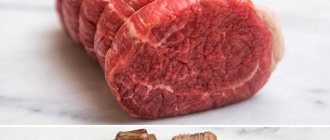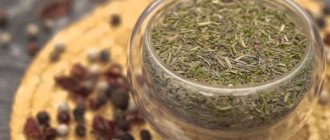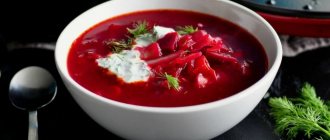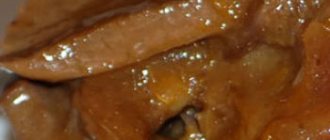Most people love soft and juicy chops fried in batter; this dish can be served both on a holiday table and on an everyday basis. Why beat meat and how to do it correctly?
A chop can be prepared from any meat you like, as well as from any part of the carcass - the back, neck, or even from the liver, all this can be chopped and cooked deliciously. In order for the meat to be juicy and tender, beating is exactly what is needed. Now we will find out what and how to properly beat meat.
Meat beating process
The meat is quite tough in its structure. Even fried or boiled meat retains a large number of small ligaments, fibers and tendons, which greatly strain the chewing muscles and digestive organs.
The softest tissue in meat is muscle tissue; it is this that softens the most during upholstery. And those hard fibers that are placed in different directions become more elastic and soft with prolonged and intense beating.
Usually the beating process is carried out using metal hammers. The hammer has a serrated surface, which is used to beat the meat, this allows you to soften the structure of the meat fibers.
Hammers are different, depending on the caliber of teeth. Using different hammers, you can beat the meat in several stages. You need to start beating with a larger caliber and so on in a descending manner, in this way you can bring the consistency of the meat to a mushy state.
Benefits of pounding meat
Due to the fact that the structure of the meat is softened by beating, such a product is easier for the body to process. Meat fats and proteins in the intestines will be absorbed much faster and completely, and much less meat that can rot will reach subsequent sections.
One of the serious causes of diseases of the intestinal tract is the deposition and decay of proteins in it. This is what vegetarians are guided by when they talk about the dangers of eating meat. Due to this rotting process, poisoning, flatulence, various disorders, and even rectal cancer can develop.
And when eating pounded meat, this risk of protein deposition and rotting is minimized. Not to mention the teeth and the damage that rough meat can cause them.
However, in addition to the advantages, there are also disadvantages.
The main disadvantages of pounded meat
When beating meat, valuable components in the form of proteins and fats are preserved, but there are also some that can be lost.
During the process of beating meat, a large amount of juice and liquid is released. This juice contains, although replaceable, useful substances - mineral salts, vitamins and other biologically active substances.
And it’s clear that the harder the beating is done, the more liquid is released. The optimal solution would be to find a degree of tenderization that preserves the maximum possible amount of nutrients while maintaining a fairly soft meat consistency.
How to properly pound meat
In the absence of disorders or diseases of the digestive tract, and sufficiently strong teeth, it will be sufficient to beat the meat, even the toughest, with a hammer with large teeth. After beating, you should not level the surface of the meat; it is better if there are pits left. This will not only provide an aesthetically pleasing appearance to the chop, but will also retain juice in these recesses.
But if you have problems with your teeth or digestive tract, then it is better to sacrifice some of the beneficial elements and beat the meat very diligently so that it is as soft and tender as possible.
Sometimes cooks pursue the goal of beating meat so that it has a consistency reminiscent of a soufflé. Although it requires hard and long hammering, the result is a tender meat soufflé combined with the juices. This method is considered the most optimal, since the meat retains all its beneficial properties and is very soft.
Often chops are cooked with eggs, and therefore the meat is “fertilized” with egg fats, proteins, and cholesterol.
Beating remains a very common culinary cooking technique. This method is an excellent option for those who want to enjoy the flavor palette of meat, while experiencing certain difficulties with their teeth. In addition, soft and juicy meat is more enjoyable than endlessly chewing tough pieces.
The secret to preparing appetizing meat lies not only in the recipe, but also in the technique of preparing it in advance. Sometimes it really turns out to be not as soft as we would like. Beating it before cooking can save the situation. Even the highest quality meat benefits from this. Beating makes it not only soft, but also juicy. As usual, a special hammer is used for beating. However, other improvised objects also cope perfectly with this task.
You will need
- - knife;
- – rolling pin for dough;
- - Glass bottle;
- – wooden potato masher;
- - frying pan.
Instructions
1.
In the absence of a special hammer, you can beat the meat with a knife. To do this you will need a weighty and thick knife. Cut the meat into pieces and beat them not with a sharp edge, but with the back of a knife in different directions. You can also use the handle of a knife if it is quite wide.
2.
A traditional glass bottle, or rather its neck, can make meat soft. When beating with it, pieces of meat turn out even more tender and fluffy than when beating with a hammer. To do this, it is quite easy to tap the neck of the piece of meat. However, you can beat it off with the bottom of a bottle. In this case, it is more rational to fill it with water in advance.
3.
A rolling pin for dough and a wooden masher for mashed potatoes work well as a hammer. Just don't overdo it. Excessive beating can turn juicy meat into dry meat.
4.
You can beat off pieces of meat with the flat side of the frying pan. Only in advance they should be wrapped in cling film or a plastic bag for hygiene purposes.
5.
A stone works well as a meat hammer. To do this, you need to find a hefty cobblestone, place it in a plastic bag, and only then start beating the meat.
6.
You can beat off a piece of meat with the base or edge of your palm. True, to beat off is a strong word. Rather, you will be able to soften the meat easily.
Buying decorative tiles and covering the walls with them is a typical option when renovating a bathroom or kitchen. Before laying new tiles on the wall
, it is necessary to recapture the old one. How to do this correctly?
You will need
- - gloves;
- – glasses for eye protection;
- – respirator;
- - hammer;
- – chisel and chisel;
- – hammer drill;
- – polyethylene film;
- - blanket.
Instructions
1.
Prepare the place where you will work. Cover the floor with polyethylene film. Cover the sink, toilet and other breakable objects with an old blanket. This will protect the space from fragments of dilapidated tiles, and after the completion of the work you will only need to roll up the film and throw away the fragments.
2.
Wear safety glasses. It is better to protect your hands with gloves. To prevent dust from entering your respiratory tract, use a respirator. If you don’t have a respirator, make a mask from gauze and a thin layer of cotton wool.
3.
Start beating the tiles.
Start from the top row and work your way down little by little. Separate the tiles
from the wall using a chisel and chisel.
Remove the tiles one by one, carefully picking them up by the edges. If you cannot separate the tile
, you need to break it. Hit with the hammer, but not too hard. The tile should split into several pieces. Carefully remove them and proceed to processing the next area.
4.
After removing the tiles, you must thoroughly clean the wall of old mortar. Do this by working with a chisel. Clean thoroughly so that the wall becomes smooth - this determines how the new tiles will look. There should not be even small pieces of mortar left on the wall - this may interfere with the installation of new tiles.
5.
Carefully roll up the film together with the fragments of old tiles. Remove the blanket from the wrapped items. Your wall is ready for new tiles.
Video on the topic
Note!
Don’t think that removing old tiles is that easy. This is a labor-intensive process that can take several hours. However, you shouldn’t be afraid: if you do everything neatly, then no problems will arise.
Helpful advice
If you cannot break the tiles with a chisel and chisel, you can use a hammer drill. Be careful - if you use it carelessly, you can damage the surface, which will complicate further work.
The judge's gavel is an inseparable sign of the judiciary. His blow in the courtroom is a symbol of the indisputability of the decision made by the judge. In addition, if disrespect for the court is felt in the courtroom, then the judge, in order to restore order, has the right to remind about order by hitting a special stand with a gavel.
Instructions
1.
The judge's gavel is a sign of Western justice; it is not typical for Russia. It is made of wood and is nothing more than a symbol of the judge’s power. Most often, the judge's gavel is used when sensitive disputes and crazy discussions begin during the meeting. A hammer in such cases is a signal for calm and prudence. So that the judge does not raise his voice unnecessarily, he uses it. In the 20th century, the gavel acquired a new symbolic meaning; overseas judges strike it after the reading of the guilty verdict is completed, this is a sign that the decision has been made and is no longer subject to discussion in the courtroom.
2.
The history of the gavel dates back to biblical times. There is an Old Testament story about the construction of Solomon's temple in Jerusalem. This story describes the murder of the main builder Adoniram. One of the murder weapons was a hammer. That is, the hammer turned out to be some sign of sentencing a person.
3.
Based on this biblical story, the hammer, as a symbol of creation and punishment, was taken by the Freemasons, who, apparently, were engaged in the “construction” of a global religion. The hammer in Freemasonry is the sign of the chosen Master, the one endowed with strength and power. It was with this item that the Honored Master had the right to open and close Masonic meetings. Representatives of Freemasonry reacted to the sound of the hammer with great respect and admiration.
4.
Many researchers attribute the origin of the hammer to the mythological culture of the Sumerians, who lived in the 4th-3rd millennium BC. The Sumerians are an outstanding civilization, famous for their triumphs in the field of jurisprudence. During court hearings, they had a custom of knocking with a hammer, or rather hammering nails into the lid of the coffin in which the bandit was located. For any offense on the part of the defendant, the judge drove a nail in, but if there were excuses from the guards, the nails were removed. The meaning of this custom was that the more nails were driven in, the harder it was for the bandit to get out, and the more guilty he was. After this, the judges began to use a gavel in order to calm the noisy and violently reacting public.
5.
But despite its symbolism, the hammer is currently not an indispensable feature of the courtroom, and more often than not it is of a decorative nature. A hammer is such a custom. In Russia, the hammer is not used at all, but judges often put it on their table for decoration.
Note!
The judge's gavel is invariably used in conjunction with a special stand, which should be struck. It is believed that the first stands were in the form of a metal disk, symbolizing a clear circle, and therefore the power of the judge; later it was replaced by a wooden block, which is used to amplify sound.
Note!
Be careful not to beat the meat into holes; you only have to “stretch” it slightly, that is, make it thinner. There is no point in beating a piece of meat that is less than 2 centimeters thick. In this case, you will not improve, but rather will only aggravate its taste and relish; as a result, a piece of meat after frying will resemble a “cracker”.
Helpful advice
Before beating meat, moisten the cutting board with cold water so that the dry wood does not absorb meat juice. To prevent blood splashes from the meat from flying in different directions, put it in a plastic bag and only then beat it. To make the process of beating meat virtually silent, place it under the cutting board board towel.
Many people love chops, whether they are made from chicken, pork or other meats. Everyone knows that in order to cook delicious meat, you need not only to select the necessary spices or marinade for it, but also to properly pre-process it. To make the product soft and juicy, it must be beaten before cooking. For this you need a special kitchen hammer. However, there are situations when it is absent. In such cases, you don’t need to get upset right away, because the situation can be saved by learning how to beat meat without a hammer with other improvised objects.
Why eating meat is good for your health and the environment
Meat is a problem
I'm a confirmed predator. I eat meat. I love meat, especially lean, red meat, and I have no intention of becoming a vegetarian. I tried it once about twenty years ago and it made me sick. I was bloated and fuzzy after meals and incredibly hungry in between. It just doesn't work for me. Do not misunderstand me. I love my fruit and vegetables, and cakes and biscuits, but I also love meat and believe that our bodies are designed to digest it. I don't usually think much about being a meat eater, but lately, since the word "green" has become the most overused word in the English language, I hear a lot from the environmentally sensitive crowd about how selfish and wasteful it is. eating meat and how much better vegetarianism is. I certainly agree that Americans eat too much meat and that a Big Mac and fries is not a healthy food, but let's not throw the baby out with the bathwater. There's a lot to be said for meat (and poultry, fish and eggs too), and there's a dark side to life on oats and grains.
Over a veggie burger and a power smoothie at my local health food store not long ago, my friend Ellen and I got to talking about this. Ellen has been a vegan for years and swears that a strict vegetarian diet has improved her life and health. In order. This is fine. I believe her. No problem. She invited me to her home for delicious mushroom and grain casseroles. We drink herbal tea together, and I don't call Ellen when I want someone to share chocolate cake with her. Everything had been fine for many years. But lately there had been a new harshness in Ellen's attitude. These days, she argues (with some degree of truth, I might add) that food will, in its own way, improve the planet, but the way I eat will destroy it. I disagree.
Its main argument is environmental. Namely: the main cause of global warming is the increase in CO2 levels in the atmosphere due to carbon dioxide emissions from fossil fuels. Raising beef cattle requires three to ten times more fossil fuels than growing grains and vegetable crops to feed the same number of people. In addition, cows produce huge amounts of methane, which is also toxic to the environment. Raising cattle requires much more water and land than growing crops, making natural resources inefficient. Ergo - don't eat beef. Of course, Ellen doesn't stop with the beef. She claims that veal, pork and poultry are equally bad.
So, I think, how do they measure all this? I mean, cows eat grass, but their manure is great fertilizer for crops. Is this taken into account? Yes, they require a lot of land to graze them, but can farmers grow crops on these pastures? Will grazing the land make the land more fertile next year? There are so many variables. To grow soybeans and think about all the fossil fuels used by agricultural machinery, it also requires a lot of land. What about those airplanes that collect crop dust and chemical fertilizers and pesticides that are not made from oil? How does Ellen know that it takes five times as much energy to produce meat as it does to produce soybeans? Whose numbers is she using? I did a quick Google search and found many different statistics and perspectives. I just don't think plain meat is bad - vegetables are good, and as I said to Ellen, if you care so much about animals, why do you wear leather shoes?
Benefits of meat
There are some very good reasons why our caveman ancestors hunted more than they gathered, and ate meat whenever they could find it.
- Meat protein is very effective and compact. Producing beef may require more resources than producing grain, but eating meat gives the human body much more bang for your buck. One ounce of red meat provides far more energy than five times as much rice and beans, reversing the imbalance in natural resource use.
- Red meat contains a lot of iron and B vitamins in a form that is easily absorbed by the human body. Vegetarians have a much harder time getting these nutrients and usually take B12 and iron supplements.
- People cannot live without protein. The protein in meat is not only condensed, but also complete. This applies not only to red meat, but also to poultry and fish. Plant proteins are incomplete, meaning they do not contain all the amino acids the human body needs to produce energy. Vegetarians should be careful to eat a combination of grains and legumes at every meal to get the complete protein needed to sustain life.
So I conclude that we have evolved as meat eaters and that eating meat, albeit in moderation, is good for us and good for the planet. Ellen argues that humans are not designed to eat meat because we don't have huge fangs to tear apart carcasses like wolves, and we have moles to grind up herbs and grains like cows.
This is a really stupid argument if you ask me. I mean, we also don't have two stomachs like cows and we don't chew cud or graze on grass because we are omnivores, not carnivores or herbivores. We are a highly adaptable species that has survived so well because we can eat almost anything. Historically, we've always been meat eaters—at least when meat was around.
This brings me to my final topic - healing the animals we eat with. respect. Here in America and in most developed countries, we have introduced some incredibly cruel methods in order to maximize production and lower prices, which has resulted not only in cruelty to the animals, but also in a decrease in the quality of the meat they produce. I firmly believe That herding animals into pens and pens, injecting them with hormones, and force-feeding them things they would never eat in the wild is wrong, both morally and practically. I further argue that mass production of meat is ruining the planet; don't eat meat.
Personally, I never buy beef from the supermarket. I buy great beef from a local farm that raises its own cattle, grass-fed and hormone-free. It costs more and I don't eat as often, but when I do I want the best. I buy organic chickens from the same source and eggs from my friend's son who raises his own chickens. His chickens run and scratch to earn a living and live without antibiotics or hormones. The eggs they produce have dark yellow yolks and taste heavenly.
I'm as green as anyone else. I recycle, carry my own grocery bags to the store, drive an economical car, and buy organic food locally when I can. I have friends and family who eat meat and others who don't, and I believe that food preferences are a personal choice and respected. Different touches for different people, I say. However, I don't believe there are any easy solutions when it comes to saving the planet, and I certainly don't believe that if we all stopped eating meat tomorrow the world would be a better place. It's just not that simple. There are many things we can all do to save the planets, but giving up meat is not one of them. Anyone want to join me for a burger?
.
How to hit correctly
Beginners in the kitchen who are planning to cook delicious food for the first time will have a rather difficult time. To do everything right, they will definitely need a few tips on how to beat meat without or with a hammer:
- It is best to beat fresh meat that has not been frozen before. Such chops turn out juicier because they will not lose juice when defrosting. If, after all, the meat was frozen, then before processing, you need to wait for it to completely thaw. Otherwise, the frozen product will tear when beaten.
- Old meat with veins is least suitable for beating. It is best to choose pieces of young meat, not lean, but not too fatty.
- Meat should not be washed before cooking. If it was washed, then in order for the dish not to turn out dry, it must be dried.
- It is not advisable to season the meat before beating it. All necessary seasonings should be used immediately before frying.
- The product should not be beaten too thin, otherwise you can make holes in it or the chops will turn out very dry.
- You need to fry the prepared pieces in a very hot frying pan so that they turn out tasty and juicy.
How to beat chicken fillet
To prepare some dishes (for example, chops, Kiev cutlets or rolls), we need beaten chicken fillet. This task may seem simple at first glance, but a novice cook can, due to inexperience, beat tender chicken meat to holes. Look at step-by-step photos on how to beat chicken meat. To make a thin slice, make a cut and unfold the chicken breast in the shape of a heart. It is better to beat chicken meat with a wooden mallet, not a metal one, and better on the side so that there are no cuts that easily damage the tender chicken meat. If you use a hammer with metal notches, beat the fillet carefully so that it remains intact. The beaten meat can be breaded or filled with filling and rolled up.
Thin cut meat, if it is beaten well and then cooked correctly, the dish is very tasty. I think many people love it, although now may not be the best time for such a yummy dish, because there is a strict fast.
But after Easter, meat will be available to those people who are accustomed to fasting. So, after all, the information will be useful for many, I hope.
Why is meat beaten?
Since meat is made up of muscle fibers, ligaments and tendons, it has a tough structure and retains it. This rigidity remains even after heat treatments. Therefore, a dish that is prepared from unbleached meat can be very tough, and it will be much more difficult for the body to process it. To do this, the digestive system will spend much more resources, which negatively affects the body as a whole.
As you can see, dishes made from pre-prepared meat not only turn out more tender and juicy, but, in addition, they will not impede the functioning of the digestive system.
The essence of the procedure
Fried meat is considered “aerobatics”. It’s one thing to stew beef or bake chicken in a sleeve, and quite another to cook a juicy steak. This requires not only certain knowledge, but also skills. It would be nice to understand anatomy, then it will be clear why you are doing this.
So, meat is muscle fibers, ligaments and tendons. It has a rigid structure. If you don't break it, the hardness will remain even after cooking. Then it will be difficult for the body to process it. The digestive system will spend a lot of resources, which can have a bad effect on many processes. Therefore, chefs use two methods:
- marinade to soften fibers;
- mechanically breaking them using a special tool.
How to beat the meat if you don’t have a special hammer? There are a lot of things in the kitchen that can solve this problem. Now let's move on to solving this issue. Properly prepared meat will not only be tasty, but will also not interfere with the functioning of the digestive system.
Meat beating technology
To beat the meat, you will need a few tools:
- special kitchen hammer;
- cutting board;
- seasonings to taste.
It is better to prepare all these devices in advance so that you are not distracted by anything during the cooking process.
So, step-by-step instructions for beating:
- Fresh or previously defrosted product must be cut into thin slices.
- Next, you need to take a slice and apply even blows over the entire piece. Having beaten it on one side, you should turn it over and do the same on the other.
- Repeat this procedure with all the slices.
- After all the pieces have been beaten, they need to be placed in a well-heated frying pan and all the necessary spices should be added.
- The cooking time for chops may vary. It depends on whether it is chicken, pork, veal or another product.
What is important to know
Before you think about how to beat the meat, if you don’t have a special hammer, you need to choose the right product. Otherwise, the effort spent will not pay off. In addition, there are a number of rules that must be followed:
- It is best to choose one that has never been frozen before. This is very important because meat loses its juice when defrosting. If you take it out of the freezer, be sure to wait until it thaws completely. It is best to leave it on the bottom shelf of the refrigerator for several hours.
- Old meat with veins performs the worst. Only long-term stewing will help this. Choose young, not too lean, but not greasy either.
- Do not wash meat before cooking. If this mistake is made, then dry it thoroughly with a towel.
- Seasonings can be added just before frying, but not during the battering process.
- You can't hit it too thin or too hard. You can make holes, but the meat will turn out tough and dry.
- Be sure to fry over high heat so that the crust sets.
How can you beat meat without a hammer?
There are times when you don’t have a kitchen hammer at hand. In such situations, there is no need to immediately abandon the idea of cooking chops. Many people do not know how to beat meat without a special hammer and cannot even imagine that ordinary household utensils can help with this.
For example, an ordinary knife with a thick blade can be an excellent replacement for a kitchen hammer. It is very easy to make chops with this device. Slices of meat must be struck with the blunt side of the knife. Many chefs do not recognize kitchen hammers and beat the product this way.
Here's another life hack on how to beat meat without a hammer. An ordinary glass bottle can replace a kitchen hammer. You can use it to make a soft and juicy dish by tapping it with the neck of a bottle turned upside down.
A puree maker and a dough rolling pin are also good helpers. With their help you can loosen the meat quite quickly.
If you don’t have a kitchen hammer at hand, but suddenly find yourself with an ordinary hammer, then it can also become an assistant in preparing chops. To do this, you need to tape a regular fork to it with tape or tape and beat it with this side. Excellent replacement.
As you can see, the question of how to beat meat without a hammer is not so difficult. There are different methods, and every housewife can find one that she likes.
Available means
If you don't find anything suitable in the kitchen, you can look in the pantry. Surely there is a glass bottle of wine or champagne. A great option: turn it upside down and strike with the neck. The dish will turn out no worse than if you used a professional hammer.
It also happens that there is not a single bottle at home. Then a toolbox can help out. Take out a regular hammer and attach a regular fork to it with tape. It is with this side that you will strike. Since a hammer is a heavy tool, preparing the meat will go very quickly. The main thing is not to be too zealous; you don’t need minced meat, but a juicy steak.
Benefits of pounding meat
The texture of the meat becomes softer when beaten. Therefore, as already mentioned, it will be easier for the body to absorb the fats and proteins contained in it.
The deposition of proteins in the stomach and their subsequent rotting is one of the causes of stomach diseases. This process can trigger the development of various diseases, ranging from poisoning to colorectal cancer. This is why many people gave up eating meat and became vegetarians.
When eating ground meat, this risk of protein deposits is minimized. Also, the rough product causes significant damage to the teeth because it is quite difficult to chew.
As can be seen from all of the above, unbeaten meat is harmful, and therefore, if you do not have a special device at hand, you must definitely find something to use to beat the meat without a hammer.
Why is meat important? | Healthy eating
Posted by Ian Annigan Updated December 7, 2021
In many parts of the world, meat forms a significant part of the typical diet. It contains protein, minerals, vitamins and fats, and these nutrients are important for their beneficial effects on your well-being. However, some components of meat, such as saturated fat, may have negative health effects. You must weigh the pros and cons when deciding whether to include meat in your diet.
Protein content
The protein you consume every day provides your body with a set of amino acids, which are the building blocks of protein molecules. Your cells use these amino acids to synthesize new proteins as needed—for example, to build muscle tissue, produce antibodies, or replace red blood cells. Of the 20 amino acids in proteins, your body can produce 11 of them. The remaining nine, known as essential amino acids, must be included in the foods you eat to avoid protein deficiency. Meat plays an important role in your diet because it is a protein-rich food that provides you with all the essential amino acids you need for good health.
Minerals, including iron
In addition to being high in protein, meat contains large amounts of minerals that keep your cells and tissues functioning optimally. For example, it is an important source of iron and zinc. Iron helps carry oxygen to and through tissues, and zinc is essential for a strong immune system, wound healing, and enzyme activity in your cells. The phosphorus content of meat helps keep your bones strong, the sulfur it contains can be incorporated into new amino acids, and the chromium , found in meat, helps in the metabolism of dietary sugars.
Vitamins, especially B-12
A number of B vitamins are found in the meat you eat. Thiamine, riboflavin, niacin, pantothenic acid and biotin help your cells extract energy from the foods you eat every day. Vitamin B-6 supports the health of your nervous and circulatory systems, and is involved in both protein synthesis and metabolism. This vitamin also promotes the absorption of vitamin B-12, another vitamin essential for circulatory and nerve health, as well as to generate energy. Meat is a particularly important source of vitamin B-12 because, unlike other B vitamins, B-12 is not found in any plant foods.
Fats, including unhealthy ones
Although you need a limited amount of fat in your diet for good health, the saturated fat found in meat can be detrimental to your well-being. Eating high amounts of saturated fat can increase your risk of atherosclerosis, a condition in which plaque forms on the walls of your arteries, which can lead to heart disease. Eating too much dietary fat, such as from fatty cuts of meat, can cause fatty deposits to accumulate in and around your organs, which will ultimately lead to their damage. High fat intake can also lead to an increased risk of obesity and diabetes. Selecting lean cuts of meat and removing excess fat helps minimize the harmful effects of meat while allowing you to benefit from its nutrient-rich nature.
A Meaty Choice
Many Americans—though by no means a majority—can live without meat in their diets. By some estimates, 2 percent of Americans are vegetarians, and one in four vegetarians is vegan. (Vegetarians are those who have eliminated meat, fish, and chicken from their diet, while vegans have eliminated all animal products, including eggs and all dairy products.) The Mayo Clinic appears to endorse the following dietary options: plants. with an emphasis on fruits, vegetables, grains, beans, legumes and nuts, rich in fiber, vitamins and other nutrients. And people who don't eat meat—vegetarians—tend to eat fewer calories and less fat, weigh less, and have a lower risk of heart disease than non-vegetarians. Even reducing meat consumption has a protective effect. Research shows that people who eat red meat are at increased risk of death from heart disease, stroke or diabetes." But what about people who just have a craving for meat—who love nothing more than cutting into a thick, juicy steak on a Saturday night? The Mayo Clinic advises caution or limiting this steak to a lean 3-ounce serving size. If the question of including meat in the diet comes down to personal choice—like most dietary decisions—the clinic advocates the approach of a “flexitarian,” that is, someone who eats mostly plant-based foods but occasionally opts for meat, poultry and fish. .Balance is also a choice.
.
A few secrets
There are a few more tips on how to beat meat without or with a hammer:
- It's no secret that when beating meat, splashes from it fly in all directions and stain everything. To avoid this problem, the product must either be wrapped in a bag or wrapped in cling film.
- Many housewives do not cook chops because it creates a lot of noise. To make this process quieter, place a towel under the cutting board.
- Thick pieces of meat should be beaten with large teeth of a hammer. The edges of the slices need to be beaten harder. This is done so that the chops do not change their shape during cooking.
- The wooden cutting board must first be moistened with cold water so that it does not absorb liquid from the meat. By the way, it is better to use wooden cutting boards for chops.
- The meat should be beaten carefully to prevent holes from appearing.
Pork chop - signature dish
Where to begin?
With a classic pork chop and cabbage that will be the queen of your Sunday dinners. By slightly changing the marinade, we get a traditional Pomeranian cutlet. Rosy pork chops with beer sauce will become your signature dish. Finding new ideas makes everyday cooking fun. For thrifty cooks, an onion-crusted pork chop is ideal. It will only be a matter of time before you try this recipe for Oriental Pork Chop with Sesame Seeds and Bok Choy. How else can you diversify a meat dish? Treat yourself to some pork chops with pepper sauce. Also experiment with the shape by making a pork chop stuffed with chanterelles - you won't be able to resist them! Post Views: 712
We beat the meat quietly and without splashing
Many people, when they pick up a meat hammer and start working hard with it, create a terrible noise not only in the kitchen or even the entire apartment, but sometimes even outside the apartment.
At the same time, bloody splashes and tiny pieces of meat are scattered throughout the kitchen, like in a horror movie. Then getting the kitchen in order after such a beating can be difficult. But everything can be done not so noisily and even very neatly.
To do this, the meat is simply wrapped in a tight plastic bag, or you can simply wrap it in the same cling film. After such “swaddling” of a piece of meat, splashes will not fly to the sides when beating it.
And so that your neighbors are calm during such a noisy procedure and are not indignant, place any towel under your cutting board (on which you will “chop” the meat). This will make the whole process much more silent, which will be noticeable even outside your kitchen.
Before you start beating, it is best to wet the board (if you are using a wooden board) with cold water. This way, the dry wood of the board will not absorb the juice from the piece of meat.
Also, you should not beat the meat almost to through holes. You just need to “stretch” it a little, this will make the piece a little thinner.
So different and so tasty.
Photo pixabay.com
Big, thick, flavorful and makes you salivate just by looking at it... Yes, baby, it's a steak. And, by the way, the types of steaks are very diverse: they can be classic, from the best parts of a young bull carcass that did not take part in the movement (this is only 7-10% of the total mass) and more modest, alternative ones, which are cheaper and tougher.
To understand all this meat diversity, we have collected for you the types of the most popular beef steaks along with their names and photos, as well as cooking tips.
How can you hit without a hammer?
Perhaps you had to cook chops not in your kitchen, but somewhere in the country, or you just had a meat hammer lost somewhere, but you still need to cook.
What can you do then and how can you do without a special hammer at all? You can use a knife. Of course, a small knife will not be suitable for this, but you will need a heavy and thick (in terms of the blade) knife. You also cut the meat into the pieces you need and beat these pieces not with a sharp one, but with the other, that is, with the back of the knife blade in different directions.
By the way, only housewives use a hammer to beat meat, but serious cooks use a knife for this purpose, that is, the back side of a good, thick blade.
The softness of a piece of meat can also be achieved using a glass bottle, or rather, using its neck. Simply turn the bottle over and then break off the meat piece with its neck. This will make your piece more airy and quite tender. Feel free to try it, and even the piece of meat itself will be decorated with “drawings” in the form of rings.
You can also safely replace the hammer with a rolling pin or a wooden masher, which you use to mash potatoes.
You just need to be diligent here in moderation. If you try too hard, your juicy piece of meat may turn dry, which means that after cooking it will no longer be tasty.
The last option for replacing a hammer is a stone. This is probably a more summer option, or a convenient solution for a picnic in nature. In this case, the stone should be heavier. Wash it, put it in a plastic bag (or better yet, two) and you can use it.
Juicy and tasty chops, Kiev cutlets, meat rolls, and many other dishes are impossible without first beating the meat.
Why is meat beaten?
The meat has a tough structure, maintaining its rigidity even after heat treatment (frying or boiling). The reason for this is the muscle fibers, ligaments and tendons from which it consists.
A dish prepared from unprepared (unbeaten) meat may literally be too tough, and the digestive system will need additional resources to process it.
Pre-chopped meat is a completely different matter. Dishes prepared from it will not tire the chewing muscles, and the stomach will easily digest any such meat delicacy.
In addition, the beaten meat after heat treatment will be soft, juicy and tender.
Batting technology
It is better to use meat for beating, but if chops are prepared from frozen meat, let it thaw completely, since the smallest particles of ice during beating will destroy the structure of the meat, tearing it into pieces.
Before beating, wrap the meat in cling film or place it in 2-3 disposable plastic bags nested inside each other. Thanks to this, the kitchen table and kitchen walls will remain clean and you will not need to wash them from bloody splashes and stains.
Beat the meat evenly, striking with a hammer with equal force over the entire surface of the meat piece. After processing one side, turn the meat over and go over it on the other side. Process the edges of the meat piece with special care.
To beat a thick or tough piece of meat, it is preferable to use a hammer with large teeth; a tool with smaller teeth is useful for processing thin and soft pieces, and for beating edges it will be absolutely indispensable.
To prevent the kitchen from making noise like during an intensive renovation, place a kitchen towel between the table and the cutting board.
After placing the chopped pieces of meat in a properly heated frying pan, do not rush to immediately salt and sprinkle it with spices, otherwise it will release juice and become tough. It is best to do this at the moment when a light fried crust begins to appear on its surface.











